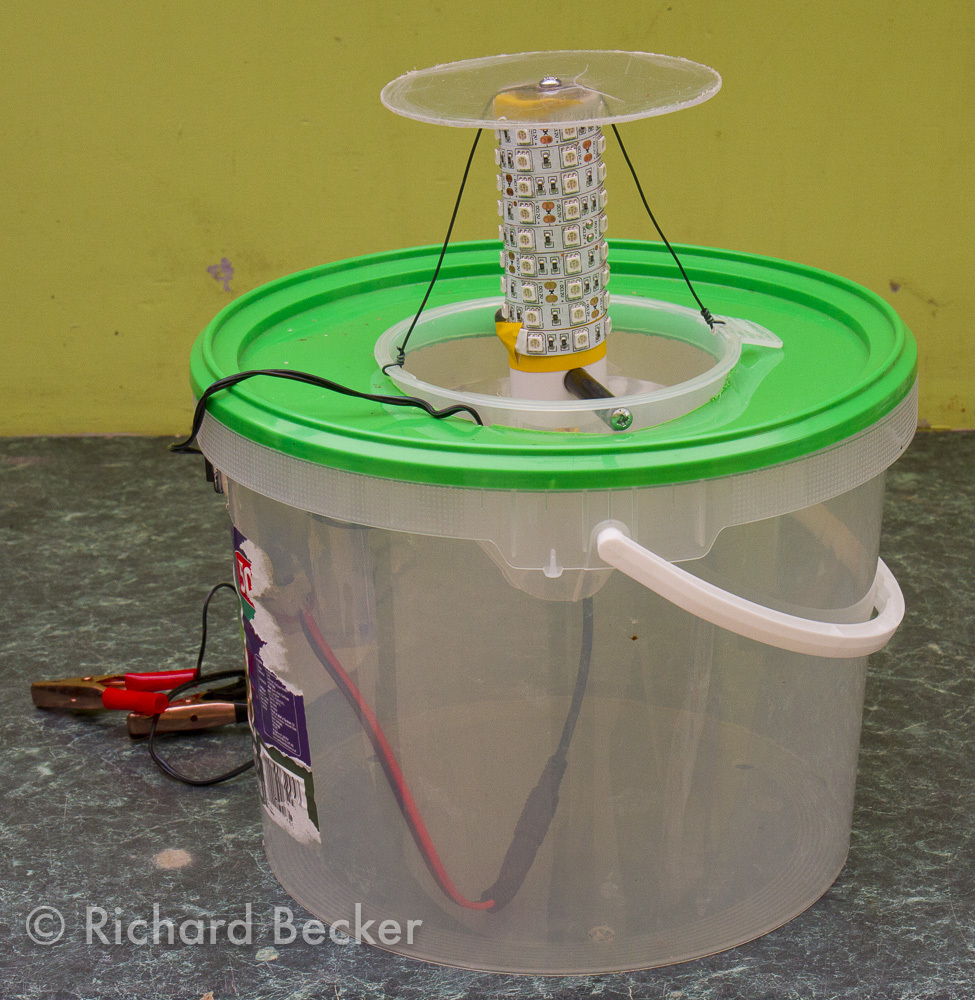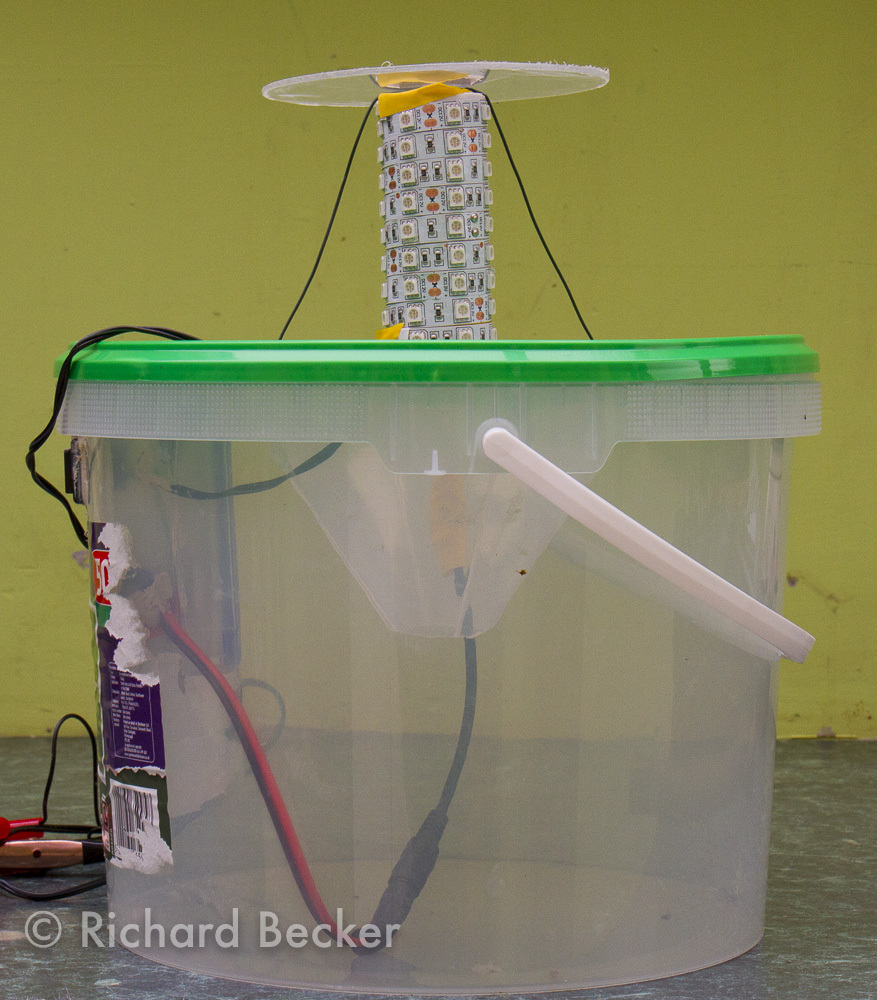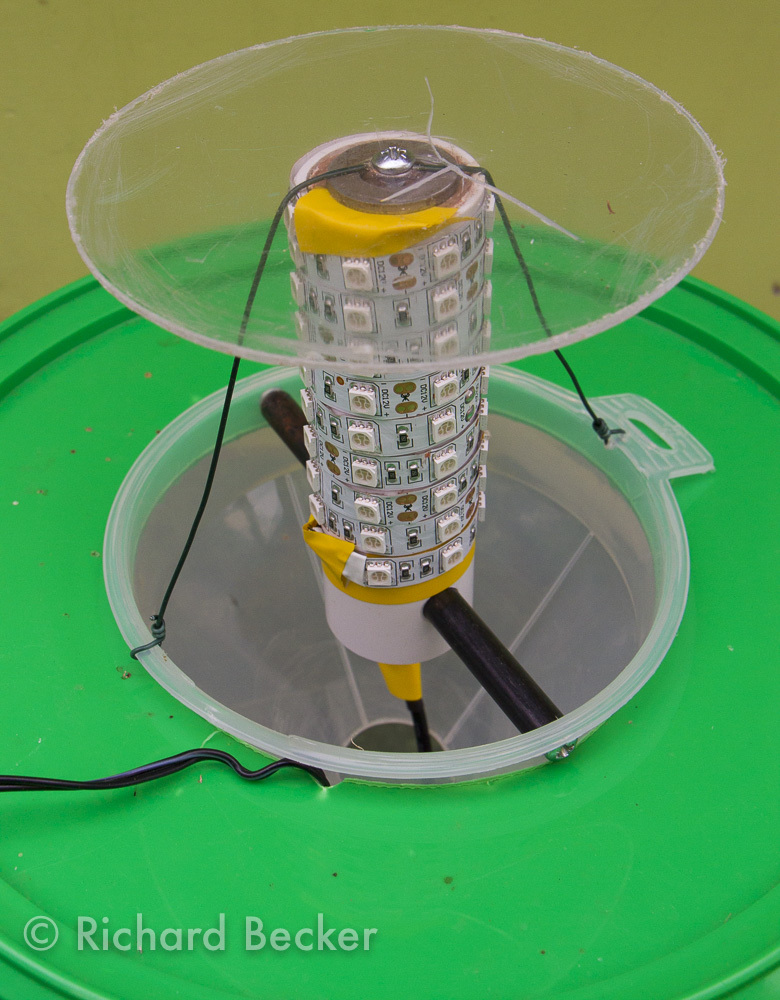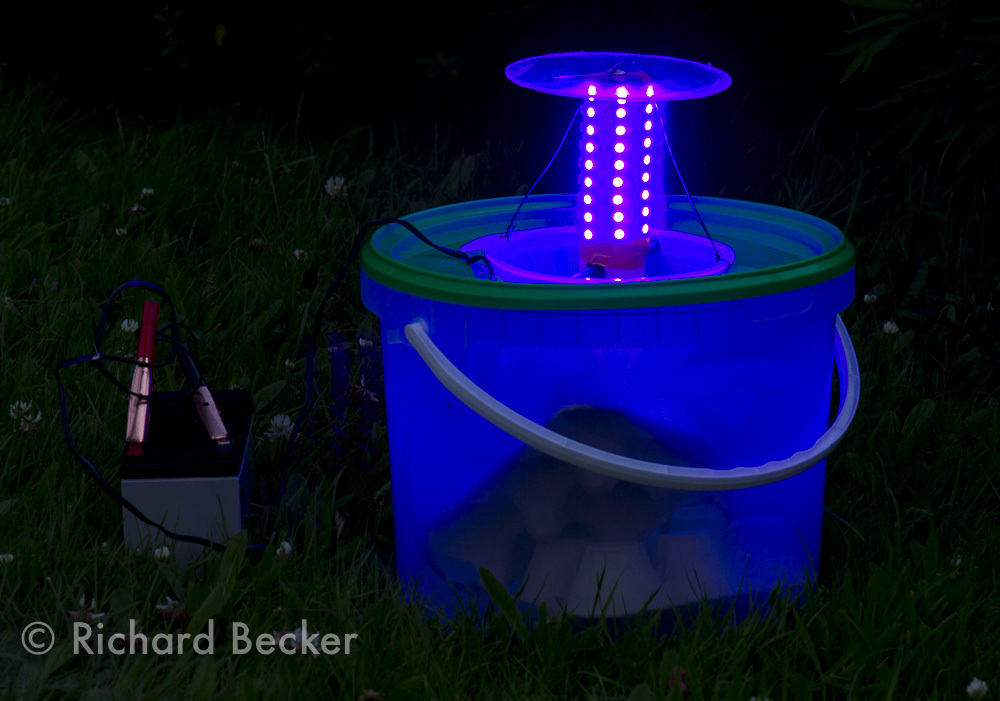03 Jul 2017
Building a simple and inexpensive LED light trap for moth recording using 12v ultra-violet LED tape.
(for an update on this see Part 2)
A few years ago I looked into building a light trap using LEDs which were just starting to become available with outputs in the ultra-violet (UV) range of the spectrum. It came to nothing as it turned out the LEDs were not readily available, and then only as unmounted components, and surprisingly there was also very little information on how they should be used in circuits. And I didn’t want to get into soldering circuit boards anyway.
Earlier this year I decided to have another look at the subject, inspired in part by a small book by Paul Palmer on exactly this subject (see link below). I set myself the target of a trap that was at least as effective as my 8w ‘Heath’ type trap (i.e. not very effective at all when compared to a Robinson trap with a 125w mercury-vapour lamp) and that would run on 4AA rechargeable batteries rather than the 12v batteries needed for the actinic light. In the last bit I have largely failed, though the 4AA version does work and catch some moths, including a new site record.
Researching again what was available I hit on the idea of using 12v LED tape which comes in 5m lengths of 300 UV LEDs and which can be cut into any length with multiples of 3 LEDs. I purchased a roll and various components (voltage regulators, plugs, battery boxes, etc) and did some experiments. The early experiments showed that the power requirement was greater than I had calculated so I would have to reduce the number of LEDs I could run if I wanted it to stay on all night. Most of this probably comes from running the voltage boost near the limit of the boost module; 5.5v brought up to 12v, making it much less efficient than the figures in the data sheet.

When I first tried the trap I had some limited success, then the nights went cold for a long period in the Spring and I caught nothing, but when the nights eventually warmed up I still caught nothing. Eventually it dawned on me that the problem was the waterproof LED tape I had bought, which seemed a good idea at the time, but although the silicon covering the lights was water resistant it was not UV resistant and had gone opaque above each LED. Quite how something like this gets manufactured is beyond me! Peeling off the silicon cured the problem immediately and moths appeared in the trap again. However this then forced a design change as I had to make the LED part of the trap water resistant by another means.

The photos are of a second model powered by a 12v 7aH battery with 63 LEDs, which is far more effective, much more so than a 12v actinic lamp (I do intend to do some direct comparisons to see how much). The tub came with fat balls for bird feeding in, the funnel is a cheap plastic one with the spout cut off. A buck-boost module is needed to regulate the voltage to 12v as the battery starts at 14v and declines to below 10v. This is in a waterproof box inside the trap.The LEDs are wrapped around a length of plastic waste water pipe and supported above the funnel. The funnel is 14cm across, to fit the largest circular hole cutter I have. I have not put any vanes on the funnel as I have found them unnecessary in previous traps I have made, and probably counter productive as the moths just rest on them rather than entering the trap, and then get eaten by birds.

Having done all this and got it all working I then found a paper in the European Journal of Entomology (link below) on exactly the same design idea published earlier this year. Mine’s not an original idea then!
Overall the result has been one cheap and very effective moth trap design plus a very lightweight and also cheap trap that can be carried anywhere and will still catch some moths. Even the version with the 7aH battery is light enough to carry some distance, especially as all fits in the bucket with a carry handle.

Cost
Assuming a recycled bucket and not including batteries and sundry doweling, screws etc the unit costs have worked out as:
9 LED 0.7w version £7.33 each
63 LED 5w version £11.70
Though to get this I have had to buy enough of some bits to make 10 traps and 5 of others. However if I was making 10 traps, buying some other parts in bulk, such as the funnels could bring the 9 LED version down below £7 each.
Even a mains powered version, with say 150 LEDs could be made for under £30 including power supply and 12v extension cable so the power unit could be inside. Also it would likely to be much more effective than commercial actinic traps which retail at £100 upwards.
References
How To Build Your Own Moth Trap by Paul Palmer
A Better Moth Trap Using LEDs
Another type of LED moth trap by Peter Mobbs.
The paper from the European Journal of Entomology; Assessing the efficiency of UV LEDs as light sources for sampling the diversity of macro-moths (Lepidoptera). INFUSINO, BREHM, DI MARCO, and SCALERCIO, can be downloaded from the website here.